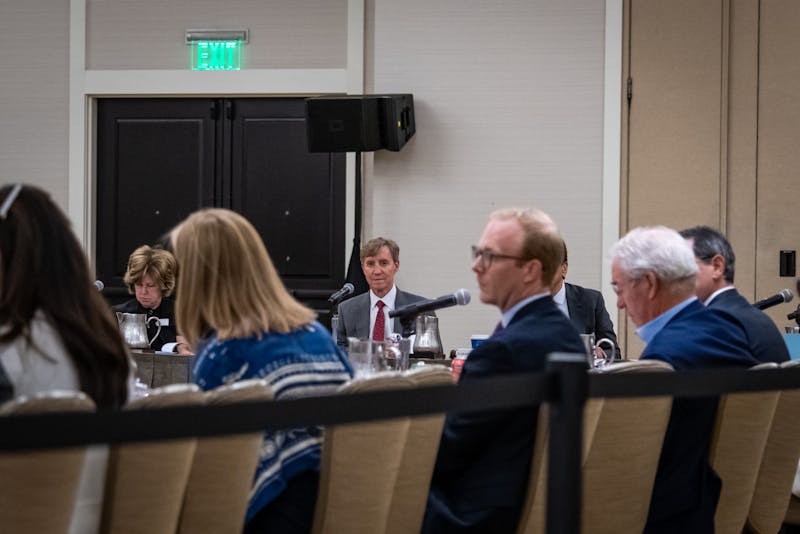I n a recent article published on New Republic, author Jenny Jarvie expresses her concerns over the quickly-spreading supposed “overuse” of trigger warnings.
For those who may not know, trigger warnings — sometimes called content warnings — are brief descriptors placed at the beginning of a piece of media whose purpose is to alert the reader that potentially harmful or triggering content lies ahead. Some common triggers include sexual assault, blood, alcohol, food and death. (In the coming paragraph, I will briefly describe what it can feel like to be triggered, which in and of itself can be upsetting to some, so take caution.)
To be triggered is an experience that varies greatly from person to person, but it is something that is very serious and unpleasant. It often takes the form of involuntary physical and/or emotional reactions, such as flashbacks and panic attacks, when one is exposed to something that reminds them of a particular traumatic experience or fear.
Jarvie’s article critiques the spread of trigger warnings in places like the classroom and argues their use is going too far, preventing students from engaging with important material. Since this article has been circulating around, many have been supporting Jarvie’s argument and agreeing that trigger warnings are getting a bit out of hand.
The idea that trigger warnings are getting out of hand is simply false. They may be drawing more attention than they used to, but they are still far from widespread, and many people who are triggered by certain things would tell you that the use of trigger warnings should continue to grow. College sophomore Rob’n Laurelli recalls a recent personal experience in which trigger warnings would have made a world of difference.
“I was talking with one of my friends, and we were discussing how we both felt triggered by the suicide articles that were showing up on our Facebook news feeds without any sort of trigger warning,” she recalls. “You never know what experiences people may have had with mental illness, self-harm, etc., and I think it’s — at the very least — considerate to be conscious of those things when posting on social media.”
One of the main arguments I have heard against the use of trigger warnings is that since the real world doesn’t come with them, using them prevents people from “toughening up” so that they can face the things that will inevitably harm them. While it is true that people who are triggered by certain things will inevitably face those things in their lives, why wouldn’t we do everything that we can to lessen the number of those instances?
This argument ignores the very real lived experiences of people who are triggered by specific things. Oftentimes , it is not simply a matter of someone needing to “get over” their trigger. It may be impossible or extremely difficult to do so, and in any case, it is not up to someone else to decide that it is time for someone to face these issues.
Furthermore, this argument is based on a flawed logic that says it is either all or nothing: that we would either have to censor everything or force people to face their triggers all the time. In reality, we can — and with trigger warnings, we do — help one another out in individual instances.
Jarvie concludes her article by saying that structuring our discourse around “the most fragile personal sensitivities” only serves to restrict society as a whole. Not only does this mislabel and simplify a diverse group of people who suffer from triggers as “fragile,” but it forcibly reframes the situation so as to put the focus on those who will not benefit from trigger warnings. We must remember that even though it may take a bit of effort and time to incorporate trigger warnings into our media, we cannot forget the immense benefits that they have.
It’s very disappointing that people are getting upset at this display of people looking out for one another’s comfort and safety. I challenge you to question why it is so important for you to say that trigger warnings are a bad thing, despite the fact that they exist for important reasons and many people appreciate and benefit from their usage.
We must stop the pervasive thinking that we can possibly know what is best for others more than they know what is best for themselves. If somebody says that they are triggered by something, we need to listen and respect that. In doing so, we display our ability to empathize with others and make our interactions safer for everyone.
Roderick Cook is a College sophomore from Nesquehoning, Pa. studying gender, sexuality and women’s studies. Cook can be reached at rodcookdp@gmail.com.
The Daily Pennsylvanian is an independent, student-run newspaper. Please consider making a donation to support the coverage that shapes the University. Your generosity ensures a future of strong journalism at Penn.
DonatePlease note All comments are eligible for publication in The Daily Pennsylvanian.







